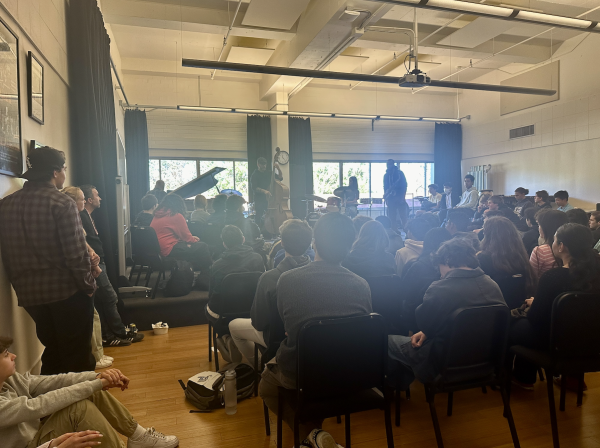“Black Panther: Wakanda Forever” Review
November 20, 2022
The highly anticipated sequel to Marvel’s Black Panther, “Wakanda Forever” released Nov. 11, dominated box office results and grossed $287.9 million in total. It received nominations for Best Original Song and Best Original Score for the Hollywood Music in Media Awards (HMMA). Curiosity for how director Ryan Coogler would pull off the film without Chadwick Boseman (who passed in 2020 from colon cancer) playing Black Panther amplified this excitement. With its brilliant acting performances, beautiful visuals amplified by intentional cinematography and deeply explored themes, “Wakanda Forever” meets all expectations, and then some.
Taking place after King T’Challa’s death from an undisclosed illness, the film begins with a moving tribute to Boseman. Echoes of his death will continue to appear throughout the film, even as the storyline turns to T’Challa’s sister, Princess Shuri played by Letitia Wright. After T’Challa’s disclosing of Wakanda’s vibranium, the nation must face conflicts with other countries as they vie for the prized resource. Meanwhile, another previously unknown race thriving under the waves called the Talokans, under ruler Namor (Tenoch Huerta), emerges with technology just as superior as Wakanda’s. The rulers grapple with obtaining and protecting their resources, each with their own people’s interests in mind. Over this backdrop, “Wakanda Forever” provides a compelling narrative that is heavy, action-packed and nothing short of inspiring.
Returning to “Wakanda Forever” are many of the beloved characters from the original film, including M’Baku (Winston Duke), Oyoke (Danai Gurira) and Queen Ramonda (Angela Bassett). The performances of the actors on screen were brilliant, with a particularly impressive performance from Wright. Some of her scenes were heartwrenching to watch, while others provided comedic relief. From grief to hope, Wright captures the many emotional dynamics of Shuri perfectly.
Even for someone like me, who is picky with aesthetics, the design and visual representation of this film were spectacular. Choreographies for fight scenes were action-packed, visually appealing and exciting. The scenery was as jaw-dropping as the first film and the costume design was stunning, enhanced by creative cinematography. The set design also allowed audiences to experience and appreciate African and Meso-American culture through an immersive environment.
The variety of themes explored in this film throughout the action also captivated me. “Wakanda Forever” criticizes corrupt politicians, while mulling over the morals of how far a leader should go to protect their own people. Depictions of grief and how people accept it are also shown, along with conversations about discrepancies between the modern, fact-based minds of the younger generation and the older generation clinging to tradition and belief. The film goes further to highlight themes of racism, colonization, and western imperialism.
Without sweeping aside Boseman’s death, “Wakanda Forever” offers him a silent tribute while also providing audiences with a vivid, touching movie that anyone can enjoy.










































